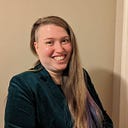Member-only story
What I Wish I Had Learned About Art Series
Find the Art You Feel Comfortable With
And don’t be afraid to embrace your inner child

Many of us who have shied away from art and consider ourselves “unartistic” have very specific ideas about art: who should do it, what it should mean, what it looks like, what is considered good, what is worth displaying, etc.
In fact, when someone says the word “art”, you probably think of paintings or drawings, often times the art pieces you expect to see in a museum or gallery.
But there are so many different types of art.
Yes, painting and drawing are both mediums of art, but they are not the only ones. And there are multitudes of different styles within those art mediums.
And here’s a secret: You don’t have to try to do the magnificent landscape painting, detailed marble sculpture, or avant-garde thing of metal.
You get to do and start where you would like with the materials available to you.
So, don’t be afraid of trying something different, even childish in your art. Below are a few ideas that I have on my art schedule in the next coming months that start at a true beginner’s level and with easy supplies. They induce childish whimsy and creativity with the opportunity to do more with your pieces.
1. Bubble Art
This is one that has been on my list for a bit and I’m looking forward to experimenting with it. It is very simple with materials you can get at your local discount store: bubble solution (with blowers), food coloring, cups, a piece of thick paper/ canvas.
Simply pour out some bubble solution into the same number of cups as you have colors of food coloring. Add a few drops of your first food coloring to the first cup, a few of the second food coloring into the second cup, and so on. Then, simply pick up your bubble blower, dip it into the first color you want to try, and blow some bubbles onto your canvas/ paper.
Experiment with how close you blow your bubbles to the canvas/ paper. Experiment with how fast or hard you blow the bubbles. Allow the bubble to float freely, but also think about how you might want…
